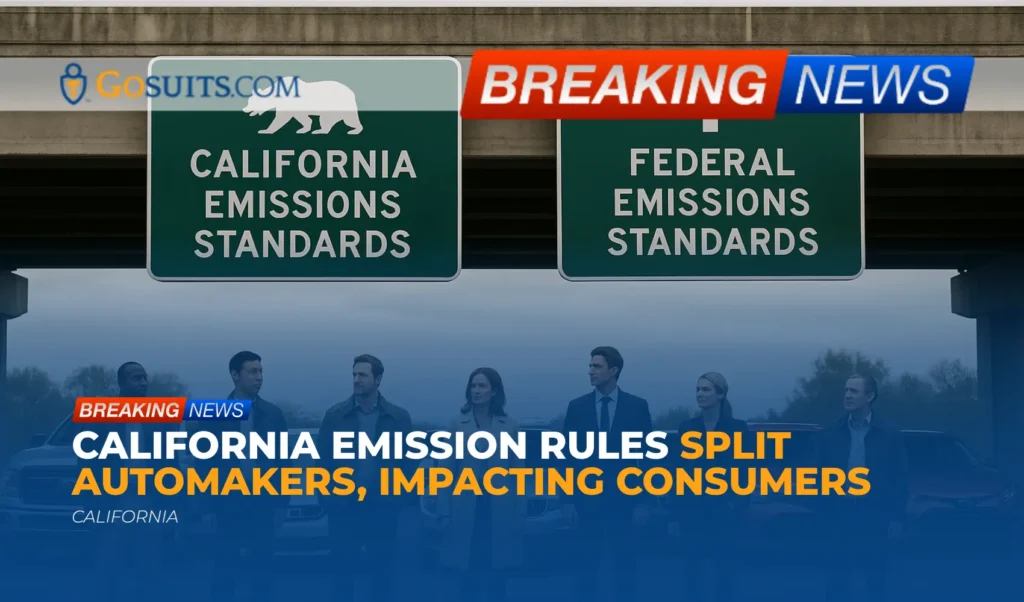The automotive industry is currently navigating a complex landscape of evolving regulations, particularly concerning vehicle emissions. A recent article highlights how California’s stringent emission rules, enabled by Section 209 of the Clean Air Act, have created a unique situation for several major automakers. California’s authority to set tougher emission standards than the federal government, with EPA approval, significantly influences the automotive market, especially with states like New York, Massachusetts, and Oregon adopting similar standards.
The 2019 Framework Agreements
In 2019, facing regulatory uncertainty due to the Trump administration’s efforts to revoke California’s EPA waiver, six automakers—Ford, Honda, Volkswagen, BMW, Aston Martin, and Volvo—entered into voluntary agreements with the California Air Resources Board (CARB). These Framework Agreements committed the automakers to increasing fuel efficiency by about 3.7% annually and reducing greenhouse gas emissions for vehicles sold in California and its allied states through the 2026 model year.
This decision was a calculated risk. By aligning with California, these companies aimed to avoid potential lawsuits and establish a clear path for compliance. However, these agreements are binding, regardless of federal actions. Even with the Biden administration reinstating California’s waiver in 2022, these automakers remain committed to the 2019 terms.
The Divide in the Automotive Industry
Not all automakers chose to align with California’s standards. Companies like General Motors, Toyota, and Stellantis favored a single federal standard, hoping to simplify their operations. This divergence has created a fascinating split within the industry, with potential implications for all involved.
The six signatories are essentially betting on California’s standards becoming the industry benchmark. Meanwhile, their competitors have more flexibility, adapting to federal rules that could fluctuate depending on political shifts. This raises critical questions: Are Ford, Honda, and the others at a disadvantage by adhering to stricter, potentially more costly, standards? Or are they positioning themselves for a future where emissions regulations only intensify?
Real-World Impacts: Costs, Vehicles, and Consumer Choices
Meeting California’s standards requires substantial investment in research and development for hybrid systems, electric vehicles (EVs), and advanced fuel-efficient engines. For the six automakers locked into the 2019 agreements, these costs are unavoidable through 2026. This could translate to higher vehicle prices for consumers in California and partner states, as automakers pass on the expenses of compliance.
Consumers face a mixed outcome. Cars meeting California’s standards may offer long-term savings through improved fuel economy and reduced emissions. However, the initial purchase price could be higher, especially affecting budget-conscious buyers. Vehicle options might also vary depending on whether one resides in a state following California’s rules or one adhering to federal standards.

State vs. Federal Power
California’s ability to set its own standards has ignited considerable debate. Supporters argue that it serves as a necessary check on federal inaction, driving automakers to innovate and reduce air pollution. Critics contend that it creates a bureaucratic burden, forcing companies to manage conflicting regulations and increasing costs.
The Framework Agreements emphasize California’s influence, demonstrating its power even when federal policy changes. The restoration of California’s waiver in 2022 reaffirmed the state’s authority, but the existing agreements mean the six automakers are locked in, regardless of future developments.
The Road Ahead and the Impact of Policy Changes
Looking ahead, the automotive industry faces significant changes. California is aggressively pursuing zero-emission vehicles, aiming to phase out new gas-powered car sales by 2035. The six automakers in the Framework Agreements are already investing heavily in EVs and hybrids, despite facing challenges such as lower sales and financial losses.
However, recent policy shifts could further complicate matters. The article notes that a potential return to policies favoring conventional vehicles could disproportionately hurt the six brands committed to California’s standards, placing them at a competitive disadvantage.

Potential Legal and Safety Implications
From a personal injury standpoint, these regulatory shifts could have indirect implications related to vehicle safety and consumer protection. As automakers navigate these complex standards, ensuring vehicle safety remains paramount. Any compromises made in the pursuit of compliance could raise concerns about potential defects or safety risks.
Additionally, the focus on EVs and hybrid technology brings its own set of safety considerations. With new technologies come new potential risks, and it’s crucial that automakers and regulatory bodies prioritize comprehensive safety testing and oversight.
Commentary from Gosuits California Personal Injury Attorney
The situation highlights the complex interplay between regulatory compliance, corporate strategy, and consumer impact. The automakers committed to California’s standards are now facing a rapidly evolving landscape with significant implications for their competitiveness and profitability. For consumers, it underscores the importance of understanding how regulatory changes affect vehicle choices, costs, and long-term sustainability. As personal injury attorneys, we remain vigilant in monitoring how these changes could impact vehicle safety and consumer rights, ensuring that automakers prioritize safety above all else in their pursuit of regulatory compliance.





